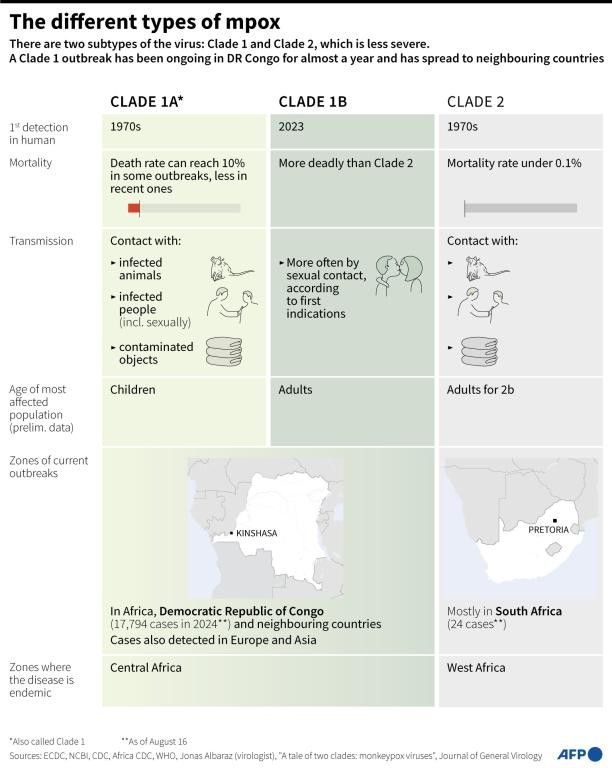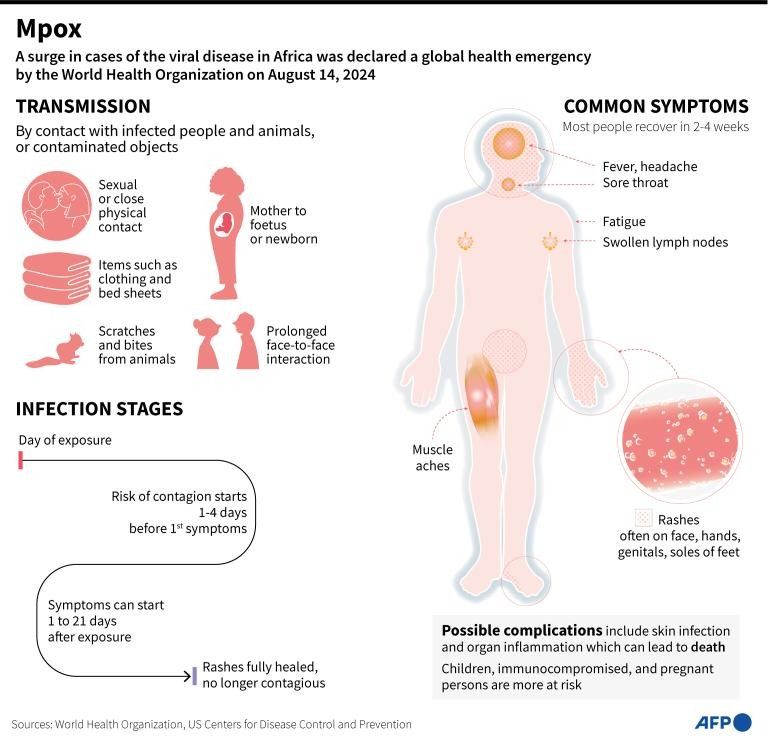Mpox details: transmission, common symptoms, infection stages

MANILA, Philippines — The Department of Health is expecting the number of Mpox cases in the Philippines to rise as it ramps up testing.
The Philippines has recorded a total of 23 Mpox cases since July 2022, 14 from this year alone as of September 9.
"This started when the World Health Organization declared Mpox as a Public Health Emergency of International Concern," said Health Secretary Ted Herbosa. "This is very manageable. No need to be scared. DOH is on top of the situation... It’s a self-limiting disease."

Here is a quick breakdown on Mpox, formerly known as Monkeypox, first detected in humans in the Democratic Republic of Congo in 1970.
Mpox can be transmitted by contact with infected people and animals or with contaminated objects.
These include sexual or close physical contact, skin-touching items like clothing and bed sheets, animal scratches and bites, and prolonged face-to-face interaction.

Common Mpox symptoms, where recovery takes two to four weeks, include fever, headache, sore throat, fatigue, swollen lymph nodes, muscle aches, and rashes often on the face, hands, genitals, and soles of the feet.
The risk of contagion begins one to four days before the first symptoms appear, which itself starts between one or 21 days after exposure.
Children, pregnant women, and the immunocompromised are more at risk from Mpox. Complications from symptoms include skin infection and organ inflammation which can lead to death. — Graphics from Agence France-Presse, data from World Health Organization and the US Centers for Disease Control and Prevention



















